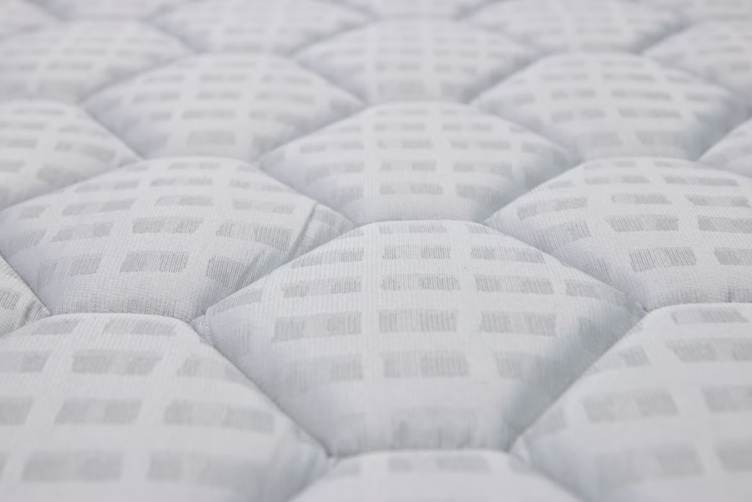Rest has always been a cornerstone of human well-being, and the space where it happens can shape how the body and mind recover. In recent years, the science behind sleep surfaces has transformed. Mattresses and toppers are now designed with technology once reserved for athletic performance and medical care. They are built to adapt, cool, support, and respond. The pursuit of deeper, more consistent rest has led manufacturers to merge advanced materials, smart sensors, and ergonomic design. This progress has turned ordinary bedding into a tool for better health and productivity. The following sections explore how new technology makes modern sleep surfaces useful and why the right surface can have a profound impact on daily life.

The Smart Layer: How Modern Toppers Improve Rest
A mattress topper no longer serves as a simple cushion between the sleeper and the mattress. It has evolved into a layer of technology, precision, and thoughtful design. The rise of advanced hybrid mattress toppers has redefined how comfort and function come together in a single piece of bedding. These toppers integrate multiple materials, often memory foam, latex, and cooling gels, to balance firmness and contouring support. In the middle of the paragraph lies the key: their hybrid structure allows sleepers to experience both softness and stability without compromising either. Such toppers respond to body heat and motion, distributing pressure across zones that align with muscle groups. The design caters to individuals who struggle with stiffness or uneven mattress surfaces, offering a smoother transition between rest and wakefulness. Over time, this leads to consistent comfort and reduced fatigue upon waking.
Cooling Innovation and Temperature Control
Sleep temperature can make or break rest quality. Excess heat tends to interrupt the body’s natural cycles, leading to restless nights and shallow sleep. New technology in sleep surfaces aims to counter this problem through advanced cooling systems. Some toppers and mattresses feature infused gel particles that absorb and disperse heat away from the body. Others rely on phase-change materials that adjust to the sleeper’s temperature, keeping the surface neutral and breathable. Ventilation channels built into foams further promote airflow, preventing trapped warmth. This balance helps the body maintain a stable thermal state through the night, supporting continuous rest. The outcome is a sleep environment that feels consistently refreshing and aligned with the body’s natural rhythm. Cooling technology has become one of the main reasons people experience improved recovery from daily stress.
Eco-Conscious Materials and Sustainable Design
As technology advances, so does awareness about environmental responsibility. The newest sleep surfaces often use eco-friendly materials that balance comfort with sustainability. Plant-based foams, natural latex, and organic cotton covers have replaced older, chemical-heavy products. Manufacturers now use production methods that minimize waste and carbon output. Many designs are certified for low emissions, making them safer for both sleepers and the environment. Some brands use biodegradable packaging and offer recycling programs for old mattresses and toppers. Sustainability is no longer a niche concern; it has become a defining characteristic of quality. These innovations demonstrate that environmental care can align seamlessly with technological sophistication.
Integrating Smart Technology into Sleep

Technology has reached the bedroom in ways that feel natural and unobtrusive. Smart sleep surfaces can track movement, heart rate, and breathing patterns through embedded sensors. The data they gather helps users understand their sleep cycles and make meaningful adjustments to daily routines. Some systems pair with mobile applications that offer reports, suggesting ideal bedtimes or relaxation techniques. Certain smart beds adjust firmness automatically throughout the night to match body needs, while others control temperature through connected systems. These integrations turn rest into an interactive experience that bridges comfort and data-driven insight. The goal is not simply to sleep longer but to sleep better, using feedback to guide small behavioral improvements. By merging technology and comfort, sleep becomes a measurable, improvable aspect of personal health.
The Future of Sleep Surface Innovation
Research into sleep technology continues to progress, opening new possibilities for comfort and recovery. Scientists and engineers are exploring biomimetic materials that imitate the body’s natural structures, offering support that feels both organic and adaptive. Advances in nanotechnology may lead to fabrics that cleanse themselves, regulate temperature more precisely, and resist allergens without added chemicals. The integration of artificial intelligence may one day predict when a person is about to wake and adjust the environment to ease the transition. Future sleep surfaces might communicate with lighting systems, air purifiers, and even wearable devices to create a perfectly coordinated sleep ecosystem. The direction of this field points toward harmony between physical design and digital intelligence, where rest becomes not only restorative but deeply personalized.
The transformation of sleep surfaces through technology has made rest a more purposeful and measurable experience. From cooling gels to smart fabrics, every advancement contributes to comfort, health, and awareness. The combination of science, comfort, and mindfulness continues to shape the way people approach the simple act of lying down and finding peace.









